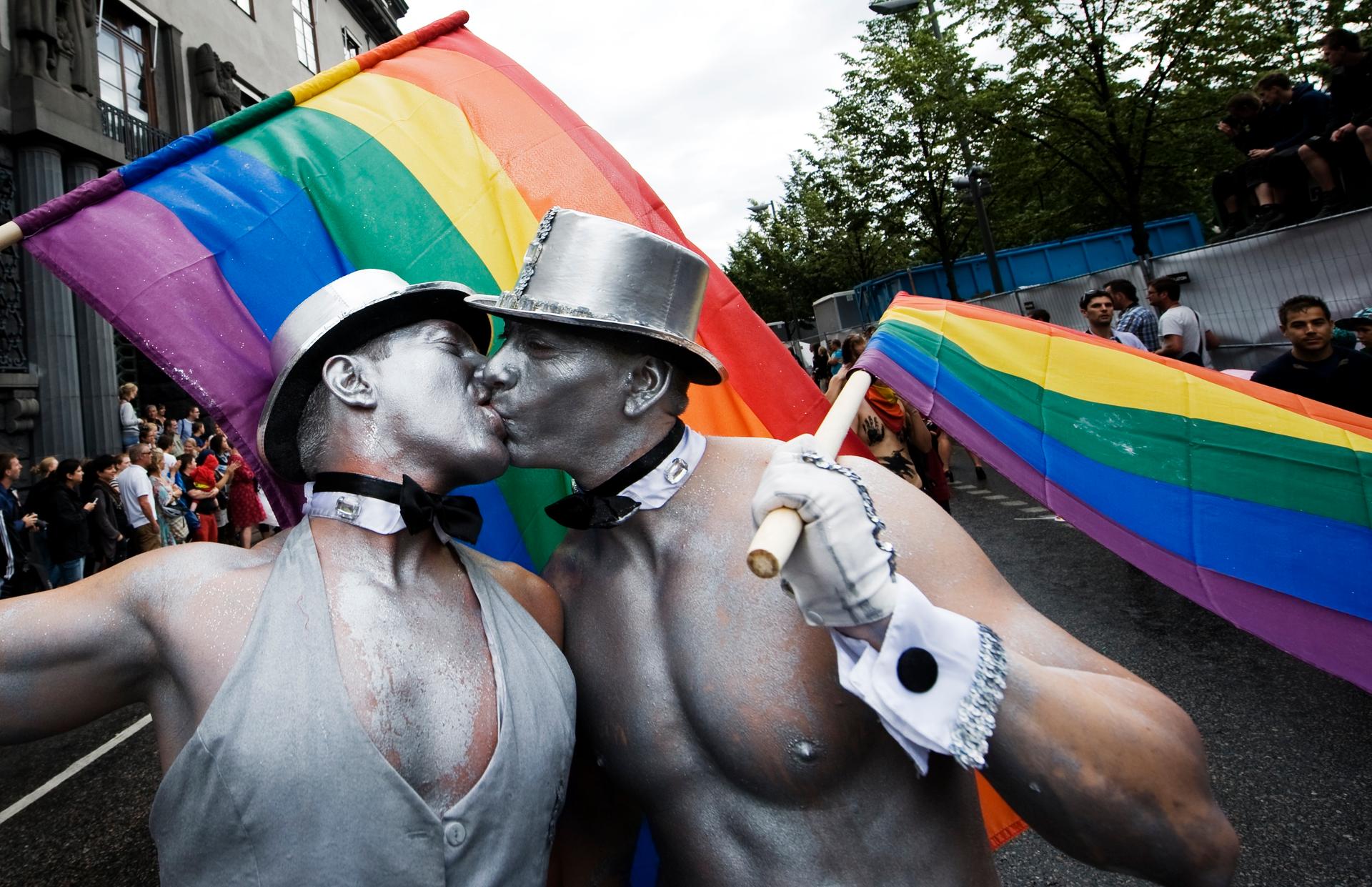‘Gaydar’ is real, study says
Men kiss during the Stockholm Pride parade in central Stockholm on Aug. 6, 2011.
A study published today in the science journal PLoS ONE suggests that ‘gaydar’ – the ability to detect whether someone is gay – may be a real skill, learned through exposure to a variety of gay and straight people, according to US News & World Report.
"I believe this is real in the population I'm testing," lead author Joshua Tabak told US News & World Report. "Grandma grew up in a different time, probably not knowing she was interacting with both gay and straight people. But if you're growing up now, you're exposed to a lot of different people."
In the study, researchers flashed randomly-ordered photos of gay and straight men and women in front of students at the University of Washington, LiveScience reported. The black-and-white photos, shown upside-down as well as right-side up, were cropped to remove hair and jewelry.
Most students identified a person’s sexual orientation with better-than chance accuracy, according to US News & World Report. Overall, the students were about 57 percent accurate, though some were more than 80 percent accurate with their guesses.
This suggests facial features (which can be processed upside-down and right-side-up) and facial configuration send signals about sexual orientation, the researchers said, according to LiveScience.
More from GlobalPost: African Union News: UN Secretary General calls for respect for gay rights on the continent
Tabak told US News & World Report that his study raises the possibility that some individuals may be unconsciously discriminating against gay people. "One primary argument against nondiscrimination protection, the stereotypical Republican response, is that if gay people kept it to themselves, it would be impossible to be discriminated against," he said. "Well, people might be making these judgments even when they're not trying to."
Nicholas Rule, Canada Research Chair in Social Perception and Cognition at the University of Toronto, told Postmedia News that this and previous studies that have implied there may be a scientific basis for gaydar make people uneasy.
"People feel very uncomfortable pointing out differences because they think it means they're bigoted or somehow perpetuating biased beliefs. But that's just not the case," Rule said. "It's when you take an approach that acknowledges and accepts diversity that you're really combating prejudice."
The article you just read is free because dedicated readers and listeners like you chose to support our nonprofit newsroom. Our team works tirelessly to ensure you hear the latest in international, human-centered reporting every weekday. But our work would not be possible without you. We need your help.
Make a gift today to help us reach our $25,000 goal and keep The World going strong. Every gift will get us one step closer.
